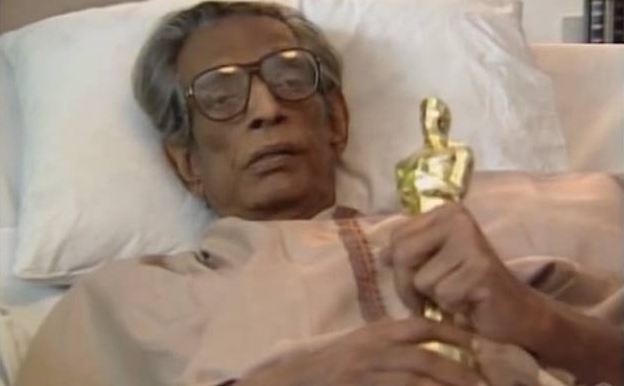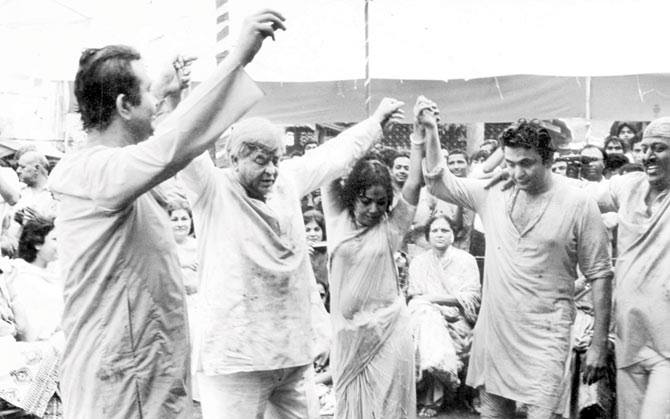Audrey Hepburn presenting an Honorary Oscar to Satyajit Ray, in recognition of his rare mastery of the art of motion pictures, and of his profound humanitarian outlook, which has had an indelible influence on filmmakers and audiences throughout the world, at the 64th Academy Awards in 1992.
Satyajit Ray is a cultural icon in India and worldwide. Satyajit Ray’s influence has been widespread and deep in Bengali cinema; a number of Bengali directors, including Aparna Sen, Rituparno Ghosh and Gautam Ghose as well as Vishal Bhardwaj, Dibakar Banerjee, Shyam Benegal and Sujoy Ghosh from Hindi cinema in India, Tareq Masud and Tanvir Mokammel in Bangladesh, and Aneel Ahmad in England, have been influenced by his film craft. Across the spectrum, filmmakers such as Budhdhadeb Dasgupta, Mrinal Sen, and Adoor Gopalakrishnan have acknowledged his seminal contribution to Indian cinema.
Beyond India, filmmakers such as Martin Scorsese, Francis Ford Coppola, James Ivory, Abbas Kiarostami, Elia Kazan, François Truffaut, Carlos Saura, Isao Takahata, Wes Anderson, Danny Boyle and many other noted filmmakers from all over the world have been influenced by his cinematic style, with many others such as Akira Kurosawa praising his work. Gregory Nava’s 1995 film My Family had a final scene that repeated that of Apur Sansar.
Francis Ford Coppola Reveals The Magic of Cinema And How Making It Happen
Ira Sachs’s 2005 work Forty Shades of Blue was a loose remake of Charulata. Other references to Ray films are found, for example, in recent works such as Sacred Evil, the Elements trilogy of Deepa Mehta. According to Michael Sragow of The Atlantic Monthly, the “youthful coming-of-age dramas that have flooded art houses since the mid-fifties owe a tremendous debt to the Apu trilogy”. The trilogy also introduced the bounce lighting technique. Kanchenjungha (1962) introduced a narrative structure that resembles later hyperlink cinema. Pratidwandi (1972) helped pioneer photo-negative flashback and X-ray digression techniques. Together with Madhabi Mukherjee, Ray was the first Indian film figure to be featured on a foreign stamp (Dominica).
Courtesy: Oscar’s Youtube Channel




